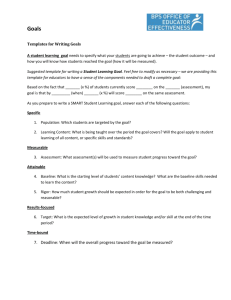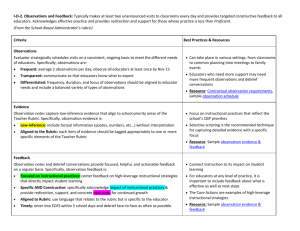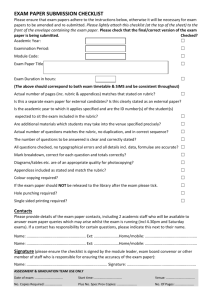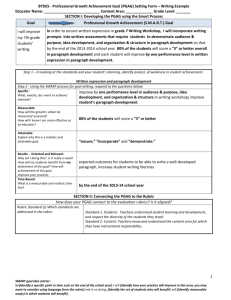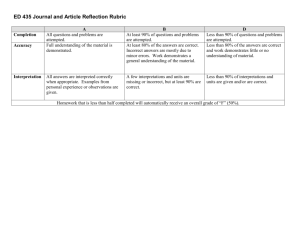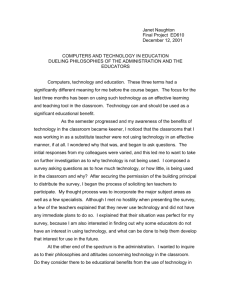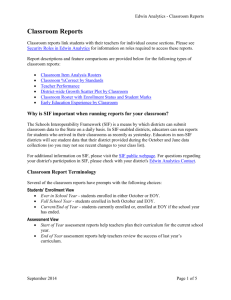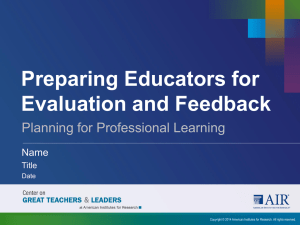View the complete Goals Guide including best practices and
advertisement
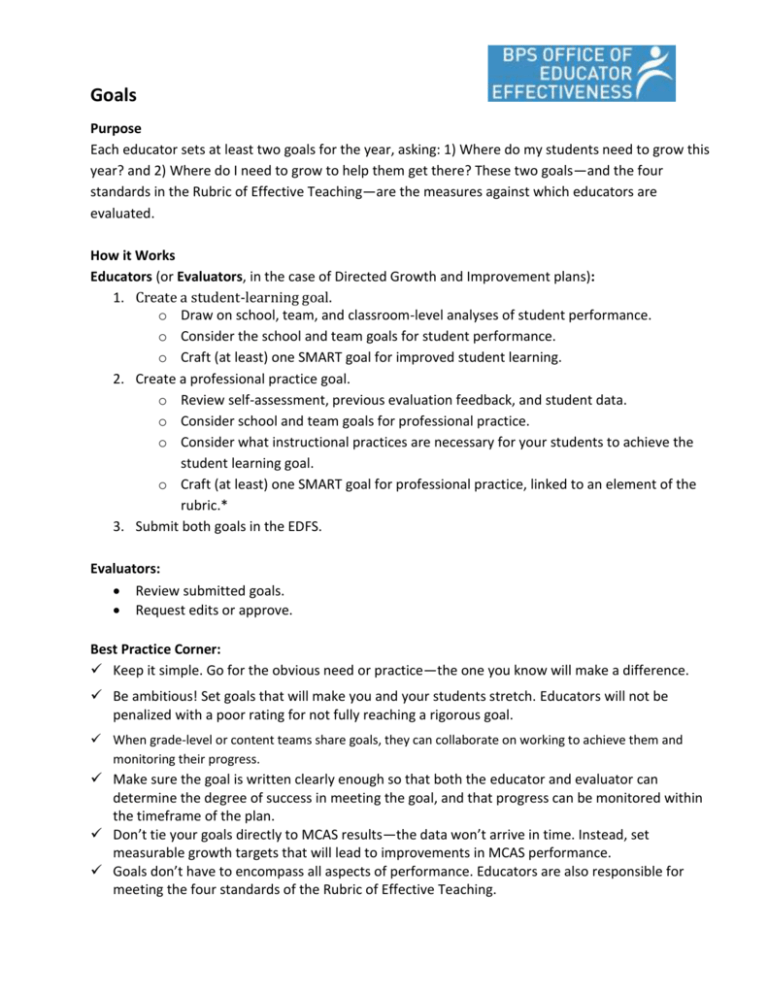
Goals Purpose Each educator sets at least two goals for the year, asking: 1) Where do my students need to grow this year? and 2) Where do I need to grow to help them get there? These two goals—and the four standards in the Rubric of Effective Teaching—are the measures against which educators are evaluated. How it Works Educators (or Evaluators, in the case of Directed Growth and Improvement plans): 1. Create a student-learning goal. o Draw on school, team, and classroom-level analyses of student performance. o Consider the school and team goals for student performance. o Craft (at least) one SMART goal for improved student learning. 2. Create a professional practice goal. o Review self-assessment, previous evaluation feedback, and student data. o Consider school and team goals for professional practice. o Consider what instructional practices are necessary for your students to achieve the student learning goal. o Craft (at least) one SMART goal for professional practice, linked to an element of the rubric.* 3. Submit both goals in the EDFS. Evaluators: Review submitted goals. Request edits or approve. Best Practice Corner: Keep it simple. Go for the obvious need or practice—the one you know will make a difference. Be ambitious! Set goals that will make you and your students stretch. Educators will not be penalized with a poor rating for not fully reaching a rigorous goal. When grade-level or content teams share goals, they can collaborate on working to achieve them and monitoring their progress. Make sure the goal is written clearly enough so that both the educator and evaluator can determine the degree of success in meeting the goal, and that progress can be monitored within the timeframe of the plan. Don’t tie your goals directly to MCAS results—the data won’t arrive in time. Instead, set measurable growth targets that will lead to improvements in MCAS performance. Goals don’t have to encompass all aspects of performance. Educators are also responsible for meeting the four standards of the Rubric of Effective Teaching. Goals Creating SMART Goals There is no one “right” goal, but some goals are SMARTer than others. Make your goals SMART by ensuring they are: Specific: Goal is explicit about what will change, and when. Measurable: Goal can be quantified and tracked with assessments and other data throughout the cycle. Attainable: Goal is both challenging and realistic. Results-focused: Goal will directly impact student learning. Time-bound: Goal has a specific timeframe for completion. SMART Student Learning Goal: Based on the fact that 60% of my current students scored 0 on the practice MCAS open response rubric and the remaining 40% scored 1, my goal is that by January, 100% of students will improve by at least 1 point on a similar assessment and that by May, 90% will score a 3 or higher. I will measure progress toward these goals with biweekly assessments scored according to the MCAS open response rubric. SMART Professional Practice Goal: Currently, students with IEPs achieve at lower levels than the rest of my students on nearly every measure. I will work with my grade-level team and coach to practice and implement at least two specific differentiated instructional strategies on a weekly basis. I will measure my progress by analyzing one lesson plan a week to ensure that I am including activities and instruction that support the engagement and growth of students with IEPs. (Rubric Element II-D-3: Access to Knowledge). Put Your Goals to the Test: the following questions can be used by educators and evaluators. When reviewing student-learning goals, ask: Does this feel like the right focus for the year? Will this rate of growth help your school hit student learning targets? Will it close performance gaps between subgroups? Is it an important step toward sustained academic achievement? Is it realistic, given students’ current skills? Do you have reliable data to measure progress throughout the year? Are there groups of students for whom you might need to track using additional/alternate measures? When reviewing professional practice goals, ask: If you achieve this goal, is it highly likely that your students will achieve the student learning goal too?
